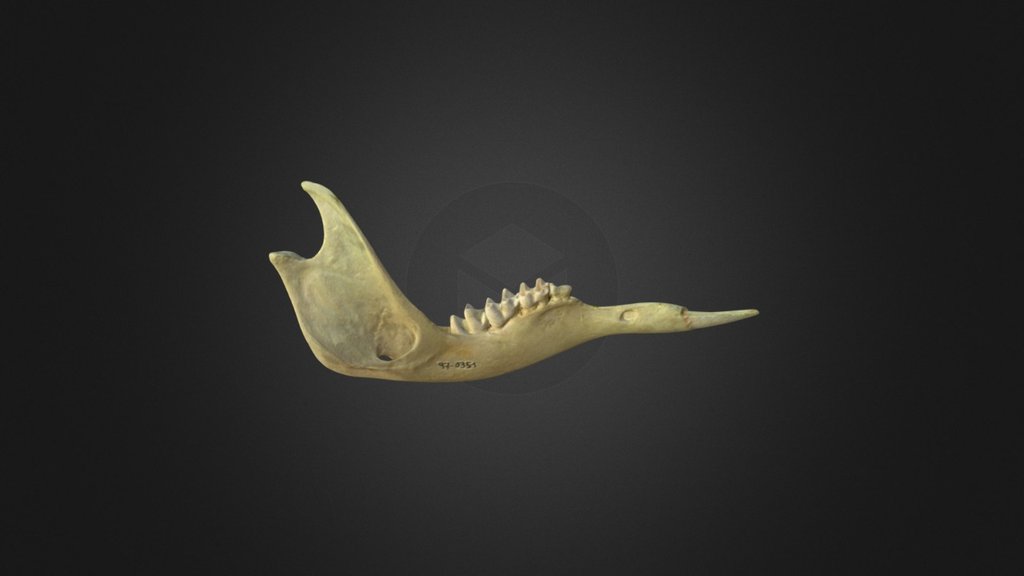
Macropus parma, right hemimandible
sketchfab
Macropus parma Waterhouse, 1846, is commonly known as the Parma wallaby. The species was first described by Waterhouse in 1846 and has been recognized for its unique characteristics ever since. The scientific name Macropus parma refers to the wallaby's distinctive physical features. Its habitat ranges from the eastern regions of Australia to the southern parts of Queensland, where it inhabits grasslands, open woodlands, and rocky outcrops. In terms of its physical appearance, the Parma wallaby is known for its stocky build and short legs. It has a grayish-brown coat with white markings on its face and a distinctive crest of fur running along its back. The species has been listed as vulnerable due to habitat loss, predation by introduced predators such as cats and foxes, and human activities like mining and land development. Conservation efforts are underway to protect the Parma wallaby's habitats and reduce the impact of these threats on the population. A key aspect of the Parma wallaby's biology is its reproductive cycle. Females typically give birth to a single joey after a gestation period of approximately 26 days, which is relatively short compared to other macropods. The young wallaby will then cling to its mother's belly for several months before eventually venturing out on its own. The Parma wallaby has been the subject of various studies aimed at understanding its behavior, ecology, and conservation status. Researchers have used techniques such as radio-tracking and camera traps to monitor the species' movements and habitat use, providing valuable insights into its needs and preferences. In addition to its natural history, the Parma wallaby has also been a popular exhibit in zoos and wildlife parks around the world. Visitors can observe these fascinating creatures up close and learn more about their unique characteristics and adaptations. The specimen described here is an adult female Macropus parma Waterhouse, 1846, which was collected from the Zoo de Barcelona (Spain) on June 21, 1997. The fossil remains consist of a right hemimandible with a size of 57.9 mm in height and 136.4 mm in width.
With this file you will be able to print Macropus parma, right hemimandible with your 3D printer. Click on the button and save the file on your computer to work, edit or customize your design. You can also find more 3D designs for printers on Macropus parma, right hemimandible.
